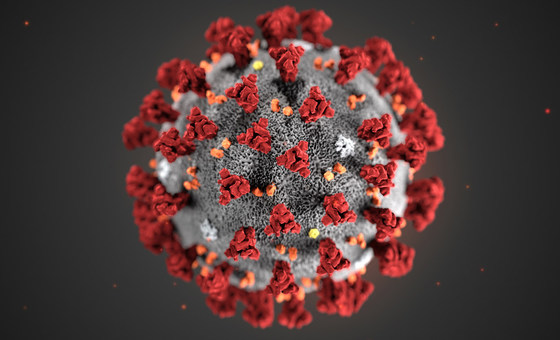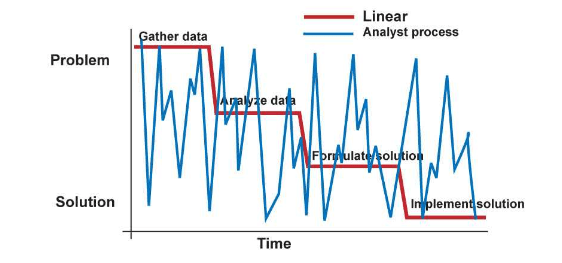After Mike Turner, the chair of the House Intelligence Committee, warned the public about what he called a “serious national security threat,” and the White House confirmed that the Russians are developing a “troubling anti satellite weapon,” I was motivated to add some historical perspective based on my study of directed energy weapons.

HG Wells was the first to invent the concept of directed energy weapons also known as death rays in his 1898 sci-fi novel “The War of the Worlds.” He was far ahead of his time. The Soviets were next to join the death ray fiction world. In the 1920s, Alexsey Tolstoy published a sci-fi novel, “Garin’s Death Ray,” that focused not just on the weapon, but also the psychology of the inventor. The novel attracted the attention of the Russian military, but the non-technical issues were prophetic. The hero of the book, Garin, described his invention of a beam weapon that was incredibly destructive, but it also had many detractors that claimed, “This invention smells of higher politics.”
After the recent revelations, CNN published their “exclusive account” that, “Russia is attempting to develop a nuclear space weapon to destroy satellites with a massive energy wave when detonated potentially crippling a vast swath of the commercial and government satellites that would cross a dangerous Rubicon in the history of nuclear weapons, disruptions to everyday life.” The story was picked up in the European “Pravda” that reported, “The weapon has the potential to destroy entire groups of small satellites such as Space X’s Starlink used by Ukraine in the war with Russia……and Moscow perceives the U.S. statements as attempt to persuade Republicans in Congress to approve assistance for Ukraine.”

This revelation had similarities to my 2023 science fiction techno thriller “The Dragon’s CLAW” that describes a test of a secret low energy nuclear (cold fusion) weapon initially discovered at Los Alamos and stolen by the Chinese and tested for the first time on a remote island in the Pacific with surprising results. I wrote: “The results of the first trial of the Dragon’s CLAW had exceeded all of the researchers’ expectations, but not in a good way. The energy output was 10 times higher than anticipated, and it had created a giant electromagnetic pulse…revealed the existence of a new, tremendously energetic and very dangerous device…. could destroy any nation’s electric grid infrastructure and all space-based communication, along with GPS”.
I wondered if not just Tolstoy, but both CNN as well as my fiction invention were examples of imagination. Then I remembered something about the Soviet secret program I had learned from Sidney Drell, Stanford physics professor and arms control expert, when I was researching the impact of Reagan’s Star Wars program on the end of the Cold War. I documented this in my autobiographical SDI story, “Death Rays and Delusions.” I learned from the information published in 2007 by Drell and George Shultz, former secretary of state, who was directly involved in the Reykjavik Reagan/Gorbachev summit in 1986, that the Russians were very aware and concerned about the development of nuclear driven electromagnetic weapons.
Gorbachev was told that that the United States was developing nuclear driven directed energy weapons. He was informed that the “design concept for directed nuclear weapons, work on which began in the U.S. in the 1970s…. weapons consist in transforming part of the energy from a nuclear explosion into powerful streams of directed x-rays or electromagnetic radiation or a stream of high energy particles. No less than three tests were conducted towards the creation of directed electromagnetic radiation weapons.”
He was also told, “Full scale development of these weapons is expected to occur in the second half of the 1990s.” Gorbachev was encouraged to negotiate a “ban on nuclear testing to prevent full scale development of directed energy weapons,” and prevent “military technical superiority of the U.S. in the development of munitions of the new generation for strategic weapons is concerned.” The Soviets’ concern about the possible development of nuclear directed energy weapons continued in the 1990s as evidenced by the writings of the head of the nuclear weapon program who in 1996 called for the end of development of such weapons that he called “an evil Jinn.”
In my novel, “The Dragon’s CLAW,” the fictional Los Alamos lab director successfully argued, “This is the ideal moment to admit that the competition over space weapons would ultimately be mutually destructive for both countries… We must draft an agreement to end all space weapons development and cooperate with energy research. The future of humanity depends on us.”

I was surprised when my fiction seemed to match some of the recent CNN revelations, but I admit that my creativity can hardly keep up with the thinking of energy weapon advocates that continue to be intrigued by new ideas related to powerful laser death rays and microwave weapons. Some claim that such energy beams are the cause of the Havana Syndrome that messes up the minds of “2000 U.S. officials in diplomatic posts worldwide … .and a CIA panel of experts concluded some of these have as a plausible explanation a directed pulsed radio frequency energy.” A microwave expert, James Benford, stated the syndrome, “certainly fits with a microwave beam as the attacking element,” but he nor the CIA suggested who might be the supposed foreign adversary.

I will leave it to the reader of my series of books (see projectzbooks.com), to find out what happens in the world of fictional electromagnetic brain weapons, but the technology development and its consequences continues in my next book “The Dragon’s Brain” to be published in September. My novel describes how electromagnetic energy weapons can attack not just space satellites, but also the minds of diplomats and even the entire population of the world. Who knows, where fiction ends and reality emerges, but the work of HG Wells told us to be prepared for inventions we can hardly imagine.




 Seventeen years ago, I was invited to give a presentation to a group of intelligence analysts at the Joint Military Intelligence College. At that time, I was managing the Advanced Concepts Group at Sandia National Labs, and my group was focusing much of our attention on emerging threats. A current issue was what was called “the global war on terrorism.” This war began in Afghanistan in 2001 after the Al-Qaeda attack and continued for 20 years. During that period, it expanded to include Iraq in 2003 with one justification being the belief that Iraq was linked to Al-Qaeda.
Seventeen years ago, I was invited to give a presentation to a group of intelligence analysts at the Joint Military Intelligence College. At that time, I was managing the Advanced Concepts Group at Sandia National Labs, and my group was focusing much of our attention on emerging threats. A current issue was what was called “the global war on terrorism.” This war began in Afghanistan in 2001 after the Al-Qaeda attack and continued for 20 years. During that period, it expanded to include Iraq in 2003 with one justification being the belief that Iraq was linked to Al-Qaeda.

